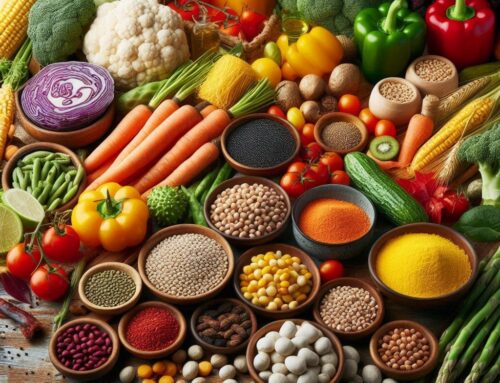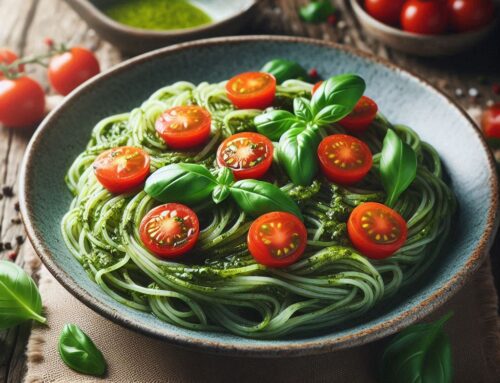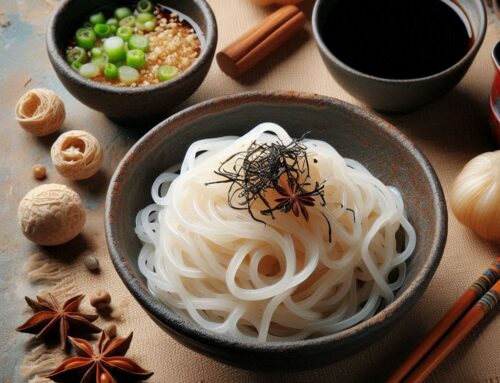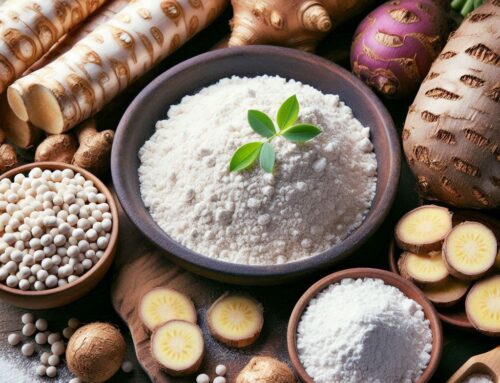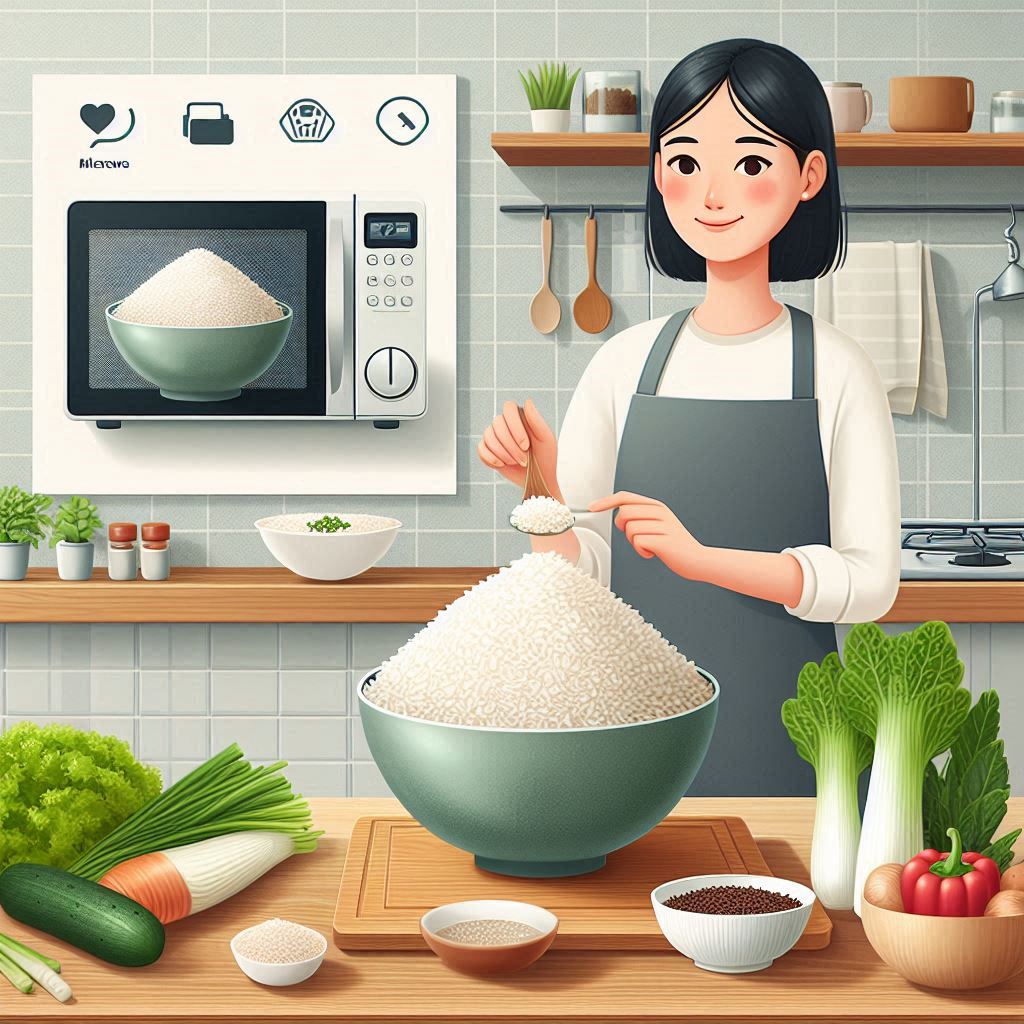
Understanding Konjac Rice: What is It and Why is it Popular?
Konjac rice, also known as shirataki rice, has been gaining popularity as a low-calorie rice alternative for those looking to manage their carbohydrate intake without sacrificing the enjoyment of a hearty meal. Derived from the konjac root, this unique food is celebrated not only for its minimal calorie content but also for its health benefits.
The konjac root, native to parts of Asia, is rich in glucomannan—a type of soluble fiber that can aid in digestion and promote feelings of fullness. This makes konjac rice an excellent choice for individuals aiming to lose weight or maintain a healthy lifestyle while still enjoying satisfying meals. Unlike traditional rice, which can be high in carbohydrates and calories, shirataki rice offers a guilt-free option that seamlessly fits into various dietary plans.
In addition to its weight management benefits, the fiber content in konjac rice may help regulate blood sugar levels and support heart health by lowering cholesterol. Its versatility allows it to be used in numerous dishes—from stir-fries to curries—making it an easy substitute for regular rice without compromising on taste or texture.
As more people seek healthier alternatives that align with their nutritional goals, konjac rice stands out as a promising option for those who want to enjoy the comfort of their favorite dishes while reaping the benefits of this remarkable plant-based ingredient.
The Nutritional Benefits of Konjac Rice
Konjac rice, often celebrated for its unique nutritional profile, has become a popular choice among health-conscious individuals. One of the standout features of konjac rice nutrition is its high content of dietary fiber. This fiber comes primarily from glucomannan, a water-soluble polysaccharide known for its impressive ability to absorb water and expand in the stomach, promoting a feeling of fullness and aiding in weight management.
The health benefits of konjac extend beyond just satiety. The dietary fiber in konjac rice can help regulate blood sugar levels by slowing down the absorption rate of carbohydrates, making it an excellent option for individuals managing diabetes or aiming to maintain stable energy levels throughout the day. Additionally, this fiber contributes to improved digestive health by promoting regular bowel movements and supporting gut microbiota.
Moreover, konjac rice is extremely low in calories and carbohydrates compared to traditional grains like white or brown rice. This makes it an ideal substitute for those following low-carb diets or looking to reduce their caloric intake without sacrificing meal satisfaction. By incorporating konjac rice into your diet, you can enjoy these nutritional benefits while still relishing a versatile and satisfying meal component.
How to Cook Konjac Rice Properly for the Best Results
Konjac rice, a popular low-calorie alternative to traditional rice, is gaining popularity for its health benefits and versatility. However, achieving the perfect texture can be a bit tricky if you’re new to this ingredient. Here’s how to prepare konjac rice properly for the best results.
First and foremost, it’s essential to rinse the konjac rice thoroughly under cold water before cooking. This step helps remove any excess starch and eliminates the characteristic odor that some people find off-putting. Make sure to rinse until the water runs clear.
Once rinsed, transfer the konjac rice into a pot of boiling water. Allow it to cook for about 2-3 minutes; this short cooking time is crucial for maintaining its desired texture—soft yet slightly chewy. Overcooking may lead to an unpleasantly mushy consistency.
After boiling, drain the konjac rice using a fine-mesh strainer and let it sit for a few minutes to ensure all excess water is removed. For added flavor and improved texture, you can lightly sauté the drained rice in a non-stick pan over medium heat for 1-2 minutes with your choice of seasonings or aromatics like garlic or onion.
By following these simple cooking tips for konjac rice, you’ll be able to enjoy its unique qualities while perfecting its texture every time you prepare it. Whether you’re incorporating it into stir-fries or serving it as a side dish, mastering how to cook konjac rice properly will elevate your culinary creations while keeping them healthy and satisfying.
The Reheating Process: Can You Safely Reheat Konjac Rice?
Reheating konjac rice can be a simple and safe process, provided you follow some essential guidelines. Konjac rice, known for its low-calorie and high-fiber content, is a popular choice for those seeking healthier meal options. However, like any food, it requires careful handling to ensure safety when reheating.
To begin with, it’s important to store your cooked konjac rice properly before reheating. Ensure that the rice is cooled quickly after cooking and stored in an airtight container in the refrigerator. This helps prevent bacterial growth that can occur if food is left at room temperature for too long.
When you’re ready to reheat your konjac rice, using a microwave is one of the most convenient methods. To do this safely, place the rice in a microwave-safe dish and add a splash of water or broth to maintain moisture during reheating. Covering the dish with a microwave-safe lid or wrap will help trap steam and heat evenly throughout the rice.
Set your microwave to medium power and heat the rice in short intervals of 30 seconds to 1 minute. Stirring between intervals ensures even heating and prevents hot spots that could lead to uneven cooking or burning.
Alternatively, you can reheat konjac rice on the stovetop by adding it to a pan with a little water or broth over low heat. Stir frequently until it’s heated through completely.
By following these reheating guidelines for konjac rice—whether using safe methods like microwaving or stovetop heating—you can enjoy this nutritious staple without compromising on taste or safety.
Taste and Texture Considerations When Reheating Konjac Rice
Reheating konjac rice, commonly known as shirataki rice, can sometimes pose a challenge in maintaining its unique texture and flavor. However, with a few simple techniques, you can enhance both the taste and texture of this low-calorie alternative to traditional rice.
To improve the reheated konjac texture, consider using a dry heat method such as sautéing. This technique helps eliminate excess moisture that often results in a rubbery consistency. Simply heat a non-stick pan over medium heat and add the konjac rice without any oil or butter. Stir continuously for about 2-3 minutes until the grains become firmer.
For flavor tips when reheating shirataki rice, incorporating aromatic ingredients can make a significant difference. Adding garlic or onion powder during reheating can infuse the grains with savory notes. Additionally, sprinkling soy sauce or tossing the rice with sesame oil before serving can enhance its overall taste profile. For those who enjoy spice, a dash of chili flakes or ginger powder can provide an extra kick.
By focusing on these methods for improving reheated konjac texture and experimenting with various flavor enhancers, you can transform your leftover shirataki rice into an appetizing dish that retains its appealing qualities even after being reheated.
Avoiding Common Mistakes When Reheating Konjac Rice
Reheating konjac rice can be a bit tricky if you’re aiming to maintain its unique texture and quality. Here are some common reheating mistakes to avoid to ensure your konjac dishes remain delicious and satisfying.
Firstly, avoid using high heat settings when reheating konjac rice. High temperatures can cause the rice to become rubbery or overly chewy, which detracts from its delicate consistency. Instead, opt for a gentle reheat on medium or low heat, whether you’re using a stovetop or microwave.
Another mistake is adding too much water during the reheating process. While it might seem like a good idea to prevent drying out, excess moisture can lead to a mushy texture that diminishes the dish’s appeal. A light sprinkle of water or broth should suffice if needed.
Additionally, stirring too frequently while reheating can break down the structure of konjac rice, making it lose its firm bite. Stir occasionally but gently to distribute heat evenly without compromising texture.
Lastly, consider incorporating fresh ingredients when serving reheated konjac dishes. Adding freshly chopped herbs or vegetables not only enhances flavor but also revitalizes the overall dish presentation.
By steering clear of these common reheating mistakes and taking care with your approach, you can enjoy konjac rice that’s as delightful as when first prepared.
Mouth-Watering Recipes Featuring Leftover Konac Rice
Leftover konjac rice, often known as shirataki rice, is a versatile ingredient that can be transformed into a variety of delicious dishes. This low-calorie, high-fiber food is perfect for those looking to enjoy satisfying meals without the guilt. Here are some mouth-watering recipes that make creative use of cooked konjac foods.
First on the list is a savory Konjac Fried Rice. Start by sautéing your favorite vegetables such as bell peppers, peas, and carrots in a hot pan with a little sesame oil. Add the leftover shirataki rice and toss it together with soy sauce and scrambled eggs for an authentic fried rice experience that’s light on calories but rich in flavor.
Another delightful option is Konjac Rice Pudding. This sweet treat can be made by simmering the leftover konjac rice with almond milk, cinnamon, vanilla extract, and your choice of sweetener until thickened. Top it off with fresh fruits or nuts for added texture and taste.
For those who enjoy international cuisine, try making Konjac Risotto. Use your leftover shirataki rice as a base and cook it slowly with vegetable broth while stirring in parmesan cheese and mushrooms for an Italian-inspired dish that’s both creamy and healthy.
These recipes not only prevent food waste but also showcase how versatile konjac foods can be in creating diverse culinary experiences. Whether you’re craving something savory or sweet, these ideas will help you make the most out of your leftovers while enjoying tasty meals that align with your dietary goals.



